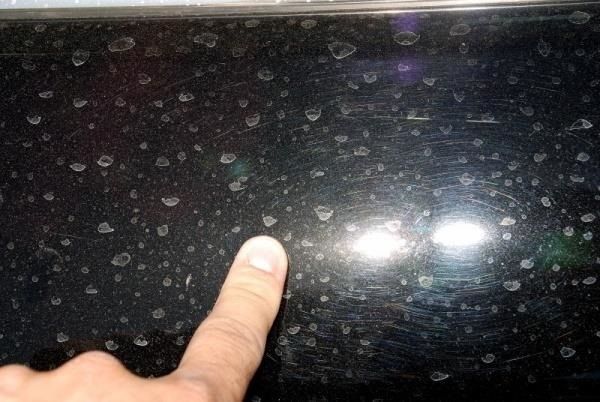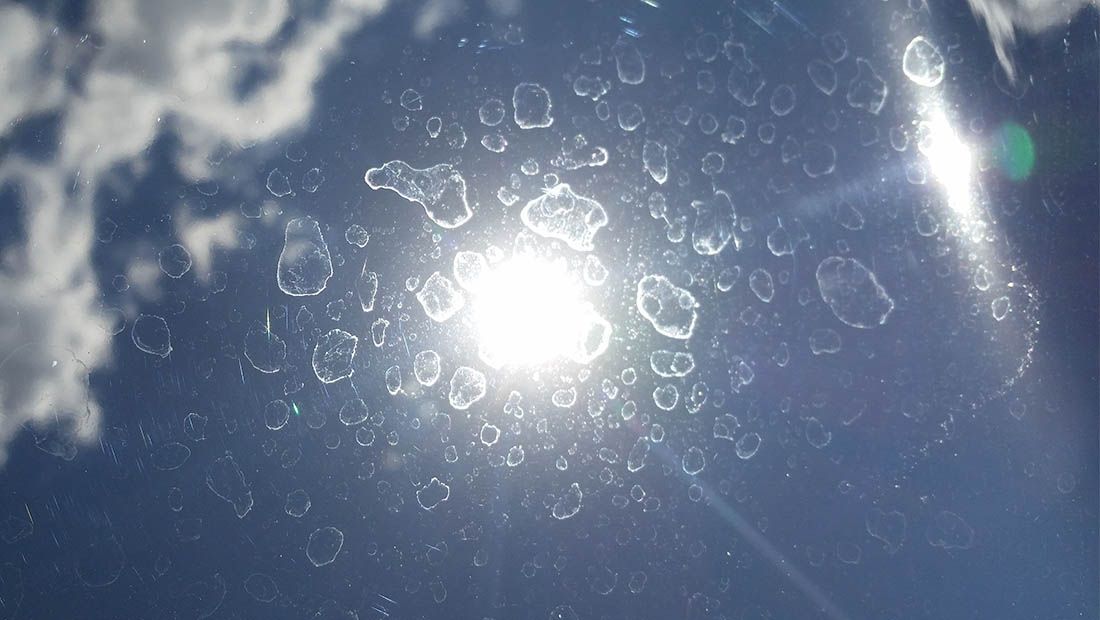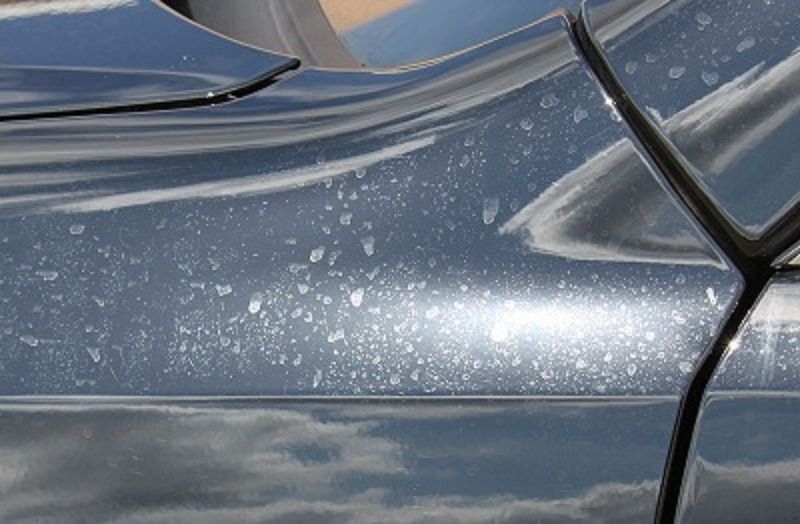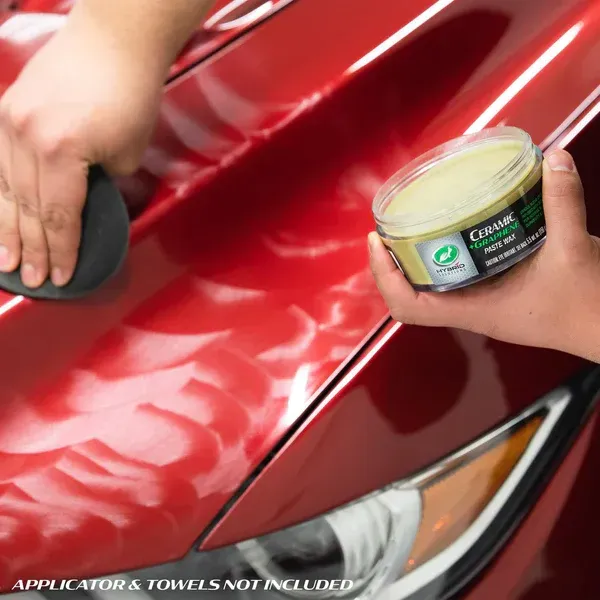How To Remove Water Spots on Car Paint
By Master Instructor of Beverly Hills Mclaren, Pagani, Lamborghini, and the President's jet.
Owning a car in the West, especially in California is almost a guarantee to having water spots on your paint.
Thats why in this article we will show you how to remove them and prevent them from forming again, so you have a spotless vehicle.
But before we begin let's dive deeper into what water spots really are:
What are water spots?

Water stains aren't just random marks left by evaporated water, they're actually traces of minerals, salts, acids, or other contaminants that have dissolved in the water and then settled on your car's surface as it dries.
The tap water in your house isn't just plain and simple H2O, it has calcium and magnesium carbonates from the nearby rock that got eroded by the water, CO2, and acids from industrial emissions and volcanic activity, lead, and other metals from environmental pollution.
All of these "extra ingredients" in your water, are the reason water spots form on the surface of your car if you wash them with plain tap water or there is some acidic rainfall.
Depending on the makeup of the water in your area, there are two primary types of water stains, and both can be damaging to your vehicle's paint to different extents.
Mineral deposits
If you happen to live in an area with lots of calcium and magnesium-rich rocks, when it rains, the water can naturally pick up some of these minerals and make its way into the underground water system.
Then it goes through the city plumbing system and turns it into hard water. Now your tap water has contaminants that can leave water stains (mineral deposits) when you wash it.
These kinds of water stains can be easily identified by their white, chalky, or crusty deposits on the car's surface.

Acid etching
You may think that acid etching is like using some kind of potent acid on your paint, but the reality is that almost any acid can damage your paint if it's left there for too long.
One of the most common sources of acid is rain.
Usually, rainfall isn't that big of a deal if you regularly wash your car, but in LA, the contaminants make it more acidic than rain in other states, so you should be careful with leaving your car for too long with rainwater on it.

How to remove water spots
This can be done by hiring a professional detailer or doing it yourself, in the instructions below we will show and teach you how to do an effective removal of the water spots.
Step 1: Wash your car
To begin you need to wash your car properly, using a pressure washer can be a good idea, but if you don't have access to one, don't worry and just use the two-bucket wash method.
Make sure that after the car is washed, there's no dirt and grime left behind, so you have a nice and clean surface.
Once you're done washing it, use a clean microfiber towel to dry it off.

Step 2: Claybar decontamination
Before anything is done to the car, the paint has to be decontaminated, using a clay bar to remove any above-surface contaminants.
Above-surface contaminants are anything like overspray, rail dust, iron contamination, brake dust, industrial fallout, or pollution. It's important to remove this before polishing because it will reduce the cutting power of the machine.
Also if you are lucky you might remove all the water stains just by doing this:
Take your clay bar or clay mitt and use some clay lubricant (soap and water) to rub it against your paint.
Gently scrub the surface in up and down motions in straight lines with the clay, and you will notice how the clay bar gets your car a smooth surface after each pass, this happens because the clay removes all the contaminants off your paint.

Step 3: Paint inspection
With the help of a flashlight, take a close look at your paint and see if the clay bar removed some of the hard water spots, if that's the case, then you only need a 1 step paint correction to get rid of them, but if not you have to use an abrasive cutting compound to be able to remove them.
If it looks like this:
You are good to go with the 1 step paint correction

If it looks like this:
Man I'm sorry for your car, you will need to be more aggressive with the paint so you can remove them.

Step 4: 1 or 2-step paint correction
Polishing 1-step paint correction
Now it's time to begin with the good stuff...
Put about dime-sized circles of polish onto your pad, about 5 or 6 should be enough.
Drag the polisher around on the paint to spread the polish onto the surface, so you can easily begin the process. Start off at a speed one or two and then for a dual action polisher, crank it up to about a five or six-speed.

Move the Dual action polisher slowly back and forth in circular motions overlapping with your previous pass, in this way, you'll be able to remove most hard water spots.
Make sure you're doing enough passes and you're going slow enough to break down the polish as it's supposed to do the work for you.

Once you've finished the first pass, using a high-quality microfiber towel remove the polish residue and inspect your paint again. With just a few passes you should be good to go and have a nice shiny finish.

Compound-Polishing 2 step Paint correction
Instead of starting off right away with a polishing compound, you need to use a cutting compound that's more aggressive, this will remove deeper hard water stains and acid etchings.
So take your Dual action polisher and put about dime-sized circles of polish onto your pad, about seven or eight of them.
Start at speed 1 to spread all the compound in the area you're working on, once you do that, crank up the speed to 4-5 and apply moderate pressure. We want to take advantage of this compound while it's wet as it has the most cutting power.

Once you're done, with the first pass, use a high-quality microfiber towel to remove the cutting compound residue, and inspect your paint again, use a flashlight to help you see the progress.
Now repeat the same process detailed above, but this time use a finishing polishing compound, this should give you a deeper gloss and a shiny finish.
How to prevent the formation of the water spots again?
The best way to prevent it is to put a protective layer between the water and your paint.
There are many great options like wax or ceramic sealant, but if you don't want to apply it on a regular basis, your best bet is a ceramic coating.



If you've made it this far, you probably want to get rid of the water stains but after reading the article, you do not want to do it yourself.
So let's get straight to the point, if having a glossier paint finish will make you feel like a badass then call us, but if you're cool with a dull faded-looking finish, well, that's free of charge.

